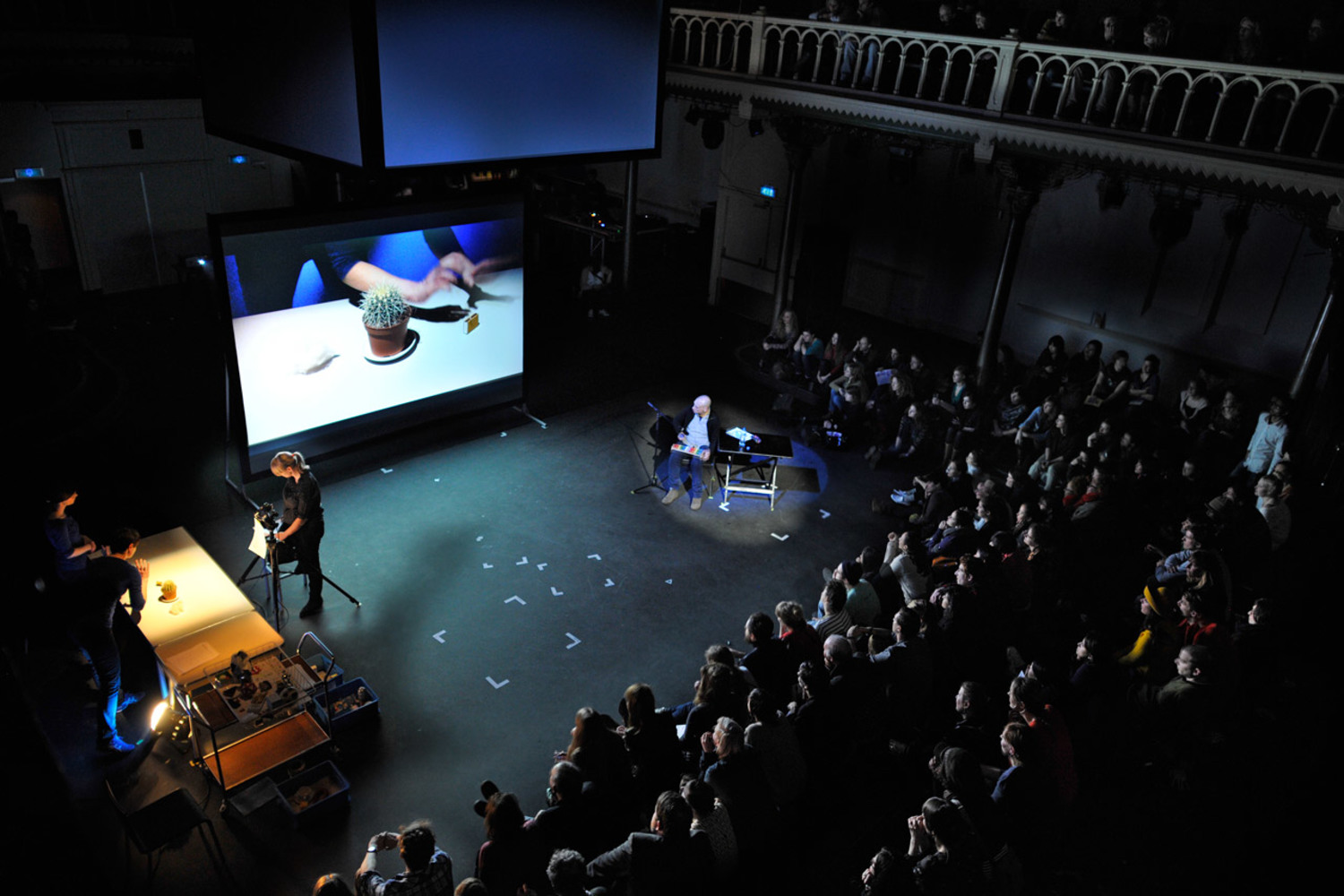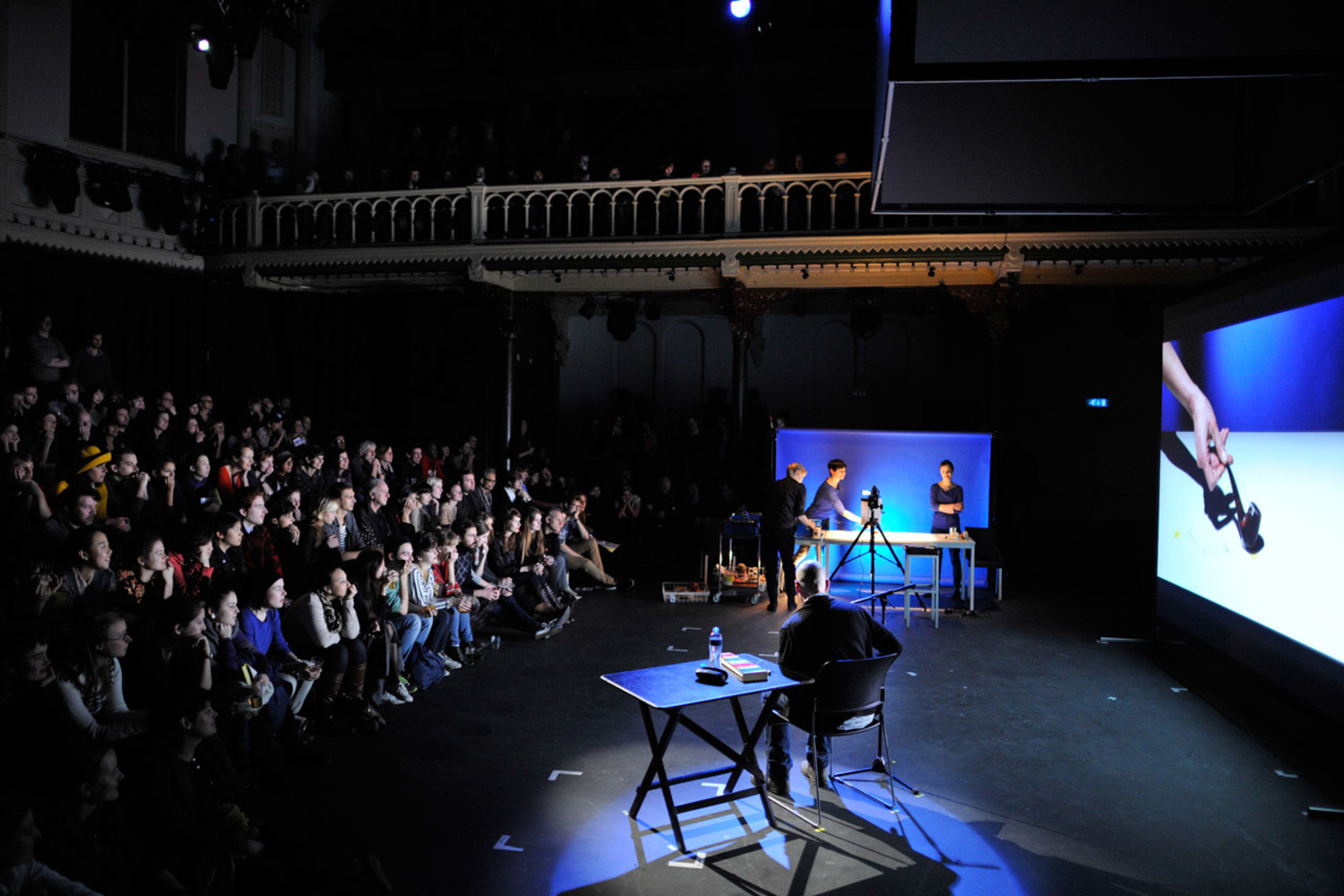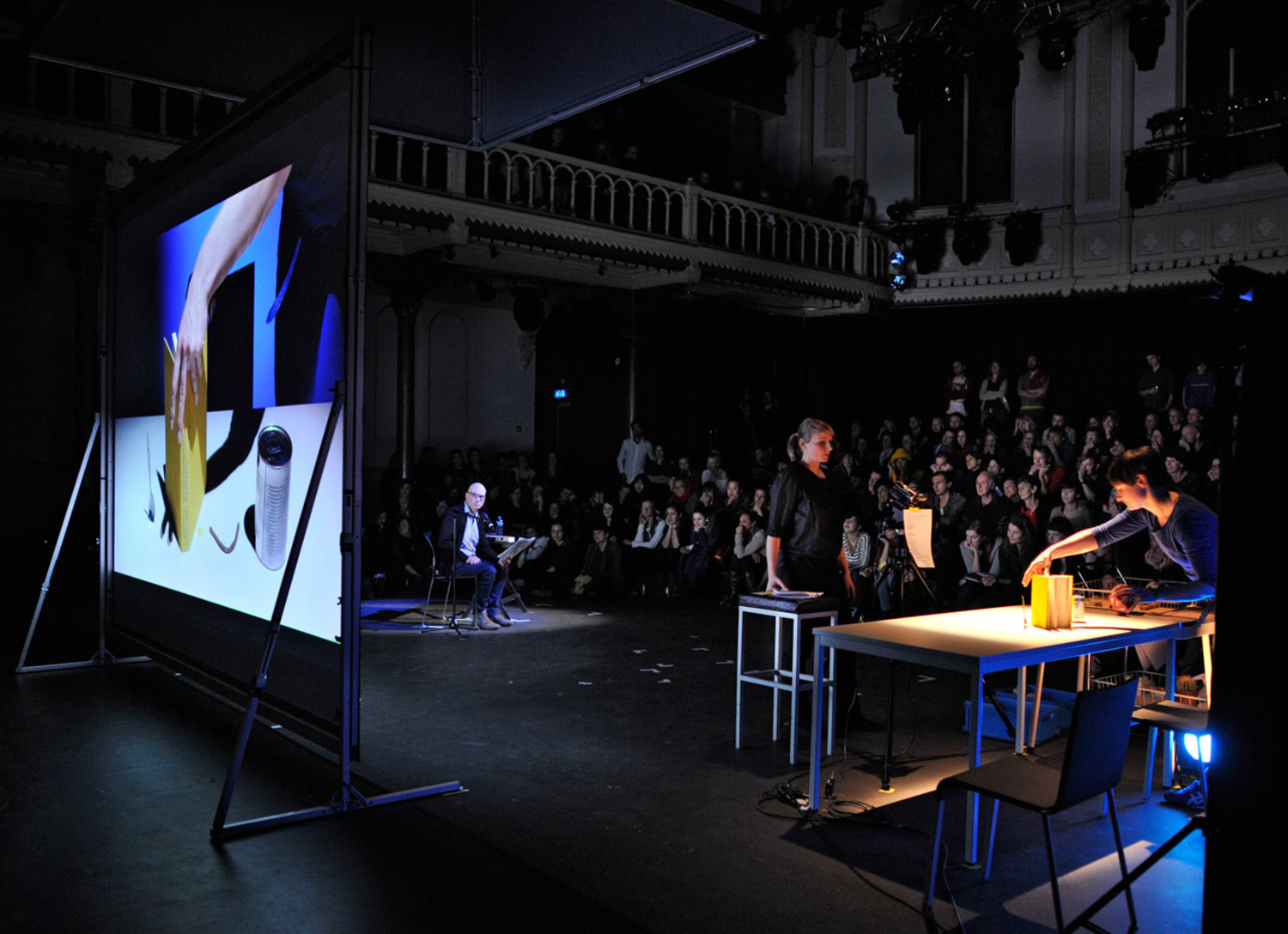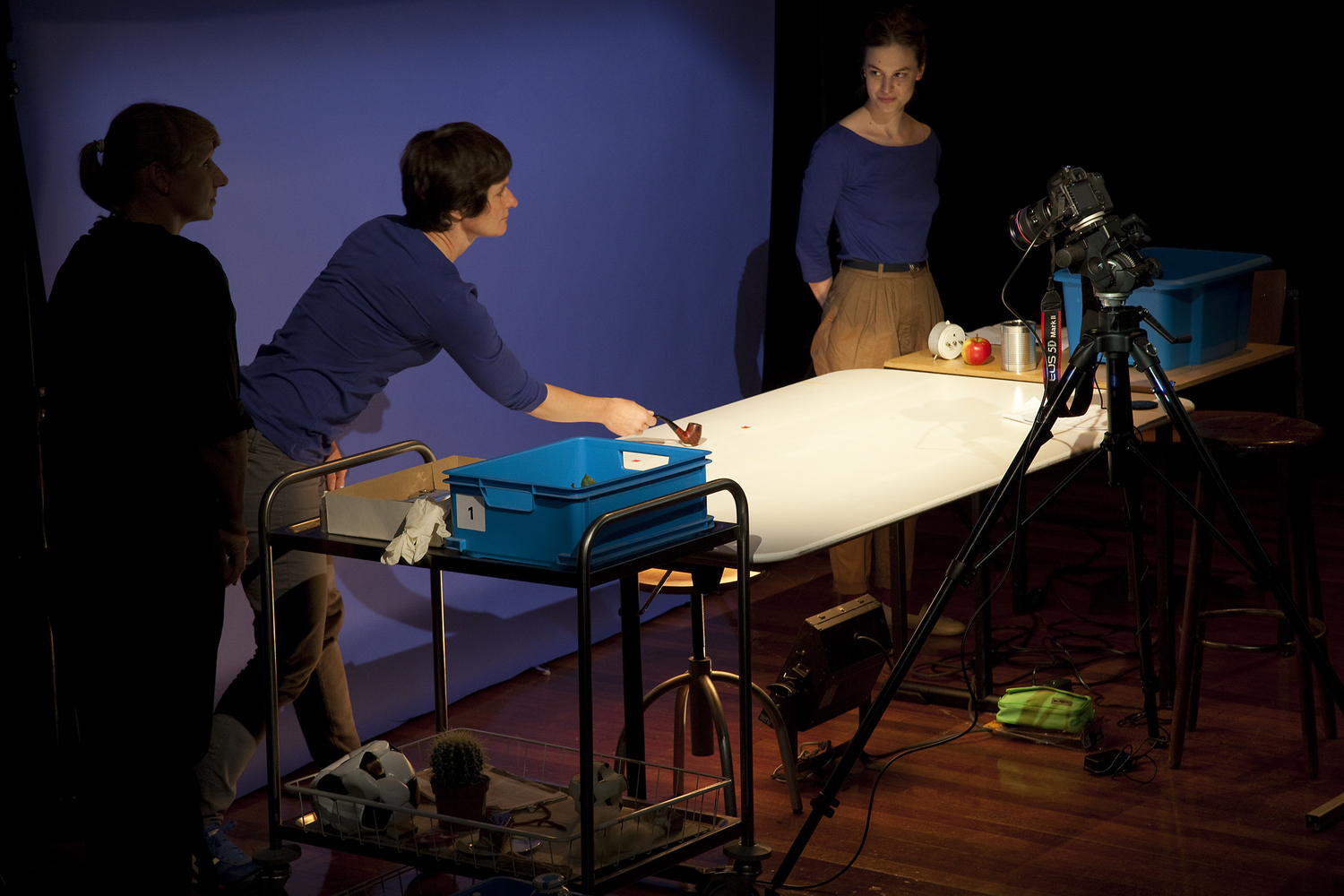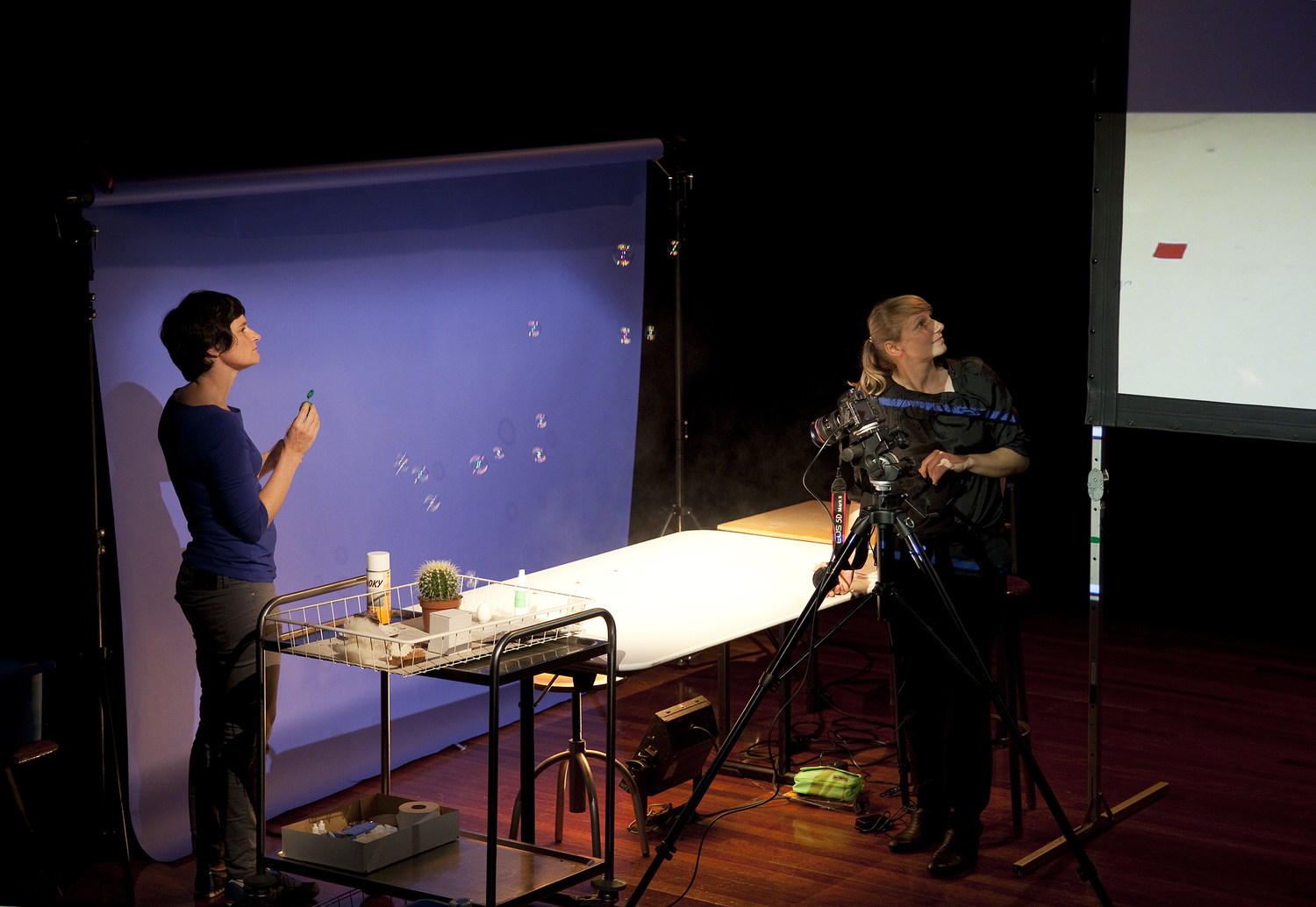DURATION: 30'
PERFORMANCE
Csilla Klenyanski, Tatjana Greiner and Michael Blass (voice)
VENUES
The Second Act – De Brakke Grond, Amsterdam
The Talent Show – Paradiso, Amsterdam
The audience participates in a language course for a newly developed script-system using objects. This modern set of hieroglyphs consists of phonetic signs, logograms and basic principles of grammar. Live projected video showing swiftly changing tableaus of objects is accompanied by a narrated explanation.
The Language of things was set up like a language course, a grammar class. I introduced phonetic signs (objects that represent sounds) and logograms (objects stand for words). I had also developed a grammar, in which the way you place an object indicates the tense, or if it’s plural or singular. This was borrowed from the grammar of hieroglyphs, which I had studied because I was interested in the way you could use pictures to convey complicated constructions. Our way of thinking and speaking doesn’t mirror the certain logic and order of the material world. In my book A NOT B, I concentrated on the shortcomings of human comprehension. The book essentially claims that our cognitive tools are too poor for the complexity of the world; we can only grasp small parts of it in controlled circumstances. In The Language of Things, I posed the idea that the opposite is also true. Language is so complex that it doesn’t have a parallel in the real world. For example, the woman drinking a glass of milk is either drinking or not drinking. But we can say things like “the milk would have been drunk by her”. We can move backwards and forwards in time, make the object the subject or vice versa. There is a mismatch between these two systems: our thought process and the real world. Each is too complicated for the other.
